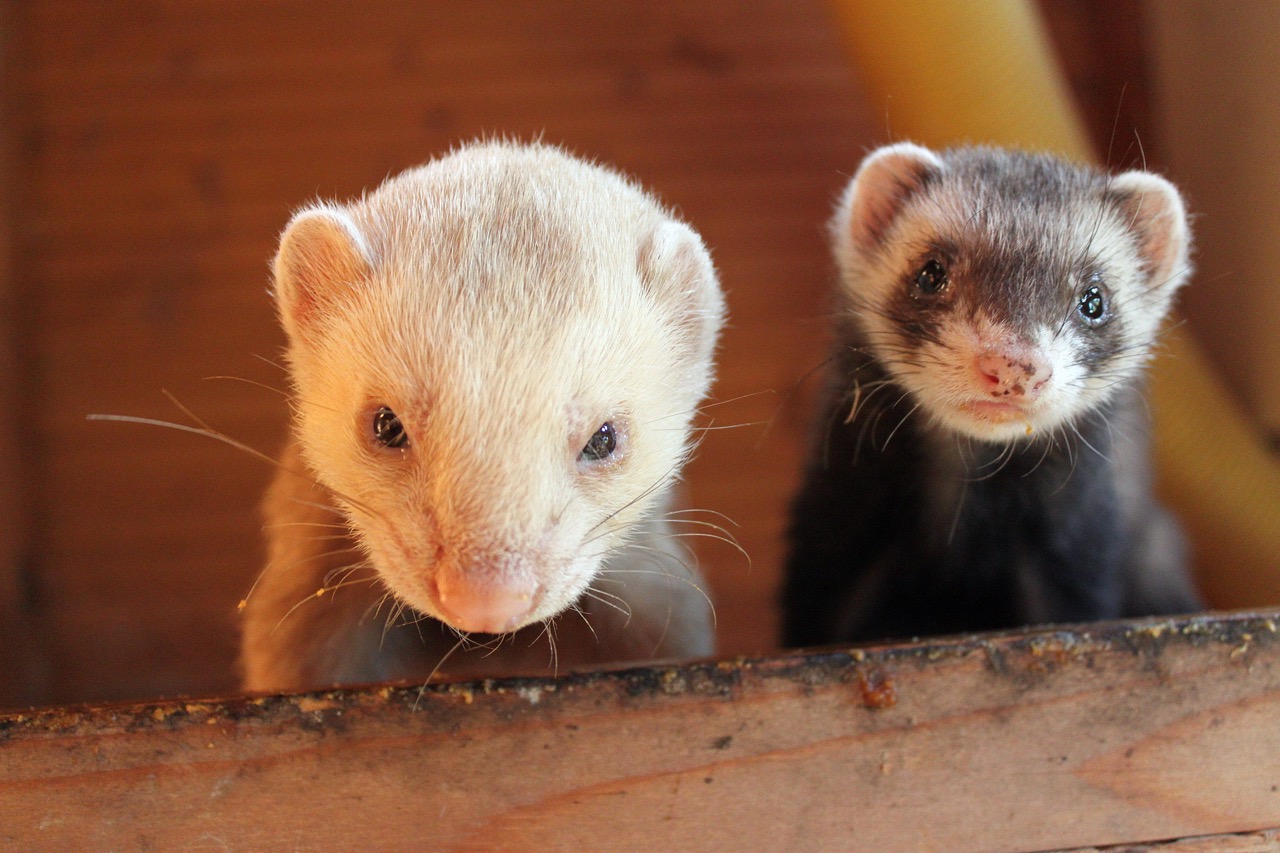Ferrets are fascinating creatures known for their playful and inquisitive nature. As members of the mustelid family, they exhibit remarkable adaptability that allows them to thrive in varied environments. Understanding the biological and behavioral traits of ferrets provides insights into how these animals navigate challenges posed by different habitats. This article delves into the unique aspects of ferret biology, their physiological traits, behavioral adaptations, and the importance of conservation efforts for their survival amidst changing ecosystems.
Understanding Ferret Biology: Adaptations for Survival
Ferrets possess a range of biological adaptations that facilitate their survival in diverse environments. Primarily, their bodies are designed for agility and flexibility, essential traits for navigating burrows and tight spaces. This anatomical structure is complemented by their elongated spine and short legs, enabling them to twist and turn with ease as they explore and hunt. Ferrets also have a high metabolic rate, which equips them to expend energy efficiently, allowing them to remain active and agile in various habitats.
Moreover, ferrets have developed an acute sense of smell and excellent hearing, which are crucial for hunting and avoiding predators. Their sharp senses help them locate prey, such as small rodents, even in low visibility conditions. This sensory acuity is further enhanced by their keen eyesight, particularly in dimly lit environments, making them effective nocturnal hunters. These biological traits collectively empower ferrets to adapt to and thrive in different ecological niches.
Additionally, ferrets have a unique digestive system that allows them to process protein efficiently, making them well-suited to a carnivorous diet. Their short gastrointestinal tract is efficient for rapidly breaking down meat, which is vital for their survival. Such adaptations not only allow ferrets to exploit a variety of food sources but also enable them to thrive in diverse habitats, from grasslands to wooded areas, thereby showcasing their impressive biological versatility.
Unique Physiological Traits of Ferrets in Diverse Habitats
The physiological characteristics of ferrets significantly influence their ability to adapt to diverse habitats. One of the most notable traits is their fur, which provides insulation against temperature fluctuations. Ferrets have a double coat: an outer layer of guard hairs that repel moisture and an undercoat that retains warmth. This fur adaptation is particularly beneficial in colder climates, allowing ferrets to maintain their body temperature while navigating through various terrains.
Ferrets are also equipped with specialized claws that aid in climbing and digging. These features enable them to navigate different substrates and create burrows for shelter, which is essential for both protection from predators and breeding. Their claws are sharp and retractable, allowing them to be effective diggers when foraging for food or creating safe nests, contributing to their survival in both urban and rural environments.
Additionally, ferrets exhibit a remarkable ability to regulate their body temperature, an adaptation that is crucial for their survival in fluctuating climates. They can tolerate both warm and cold temperatures, though extreme conditions can pose challenges. Their physiological adaptability allows ferrets to inhabit a range of environments, from arid deserts to lush forests, ensuring their continued survival in the face of environmental changes.
The Role of Ferret Behavior in Environmental Adaptation
Behavioral traits play a crucial role in how ferrets adapt to their environments. Ferrets are inherently social animals, exhibiting playful and curious behaviors that facilitate learning and interaction with their surroundings. This sociability fosters cooperation in hunting and foraging, as ferrets often work in groups to capture prey. Such behaviors not only enhance their survival skills but also allow them to thrive in communal settings, a vital adaptation for life in varied habitats.
In addition to their social nature, ferrets display a range of foraging behaviors that correspond with their environmental conditions. They are opportunistic predators, capable of adjusting their hunting techniques based on available food sources. For example, in environments where small mammals are scarce, ferrets may shift their diet to include birds or insects. This behavioral flexibility is essential for their survival, enabling them to exploit different ecological niches based on food availability.
Furthermore, ferrets exhibit territorial behaviors that serve to establish dominance and ensure access to resources. They mark their territory with scent glands, which helps minimize confrontations with other ferrets. This territoriality is crucial for maintaining a stable environment where ferrets can thrive, as it allows them to secure food and safe nesting areas, highlighting the importance of behavioral adaptability in various habitats.
Conservation Insights: Protecting Ferrets in Changing Ecosystems
As ecosystems undergo significant changes due to climate change and human activities, the conservation of ferrets has become increasingly vital. Protecting their natural habitats ensures that these adaptable creatures have the resources they need to thrive. Strategies such as habitat restoration, creation of wildlife corridors, and sustainable land use practices can significantly benefit ferret populations by mitigating the negative impacts of habitat fragmentation.
Conservation efforts should also focus on public education and awareness programs that emphasize the importance of ferrets within ecosystems. By fostering a greater understanding of their ecological role, communities can become more engaged in conservation initiatives. Encouraging responsible pet ownership and addressing issues related to feral ferret populations are also essential components of a holistic conservation approach.
Finally, ongoing research into the adaptability of ferrets can inform effective conservation strategies. Monitoring ferret populations, studying their behavior in changing environments, and understanding their ecological needs are critical for developing targeted conservation efforts. By addressing the challenges posed by shifting ecosystems, we can help ensure the long-term survival of ferrets and the ecological balance they contribute to.
In summary, ferrets are remarkable animals with unique biological and behavioral adaptations that enable them to thrive in diverse environments. Understanding their biology, physiology, and behavior offers valuable insights into their survival strategies. As ecosystems continue to change, proactive conservation efforts will be essential in safeguarding ferret populations and their habitats, ensuring that these playful creatures remain a vital part of our natural world for generations to come.










